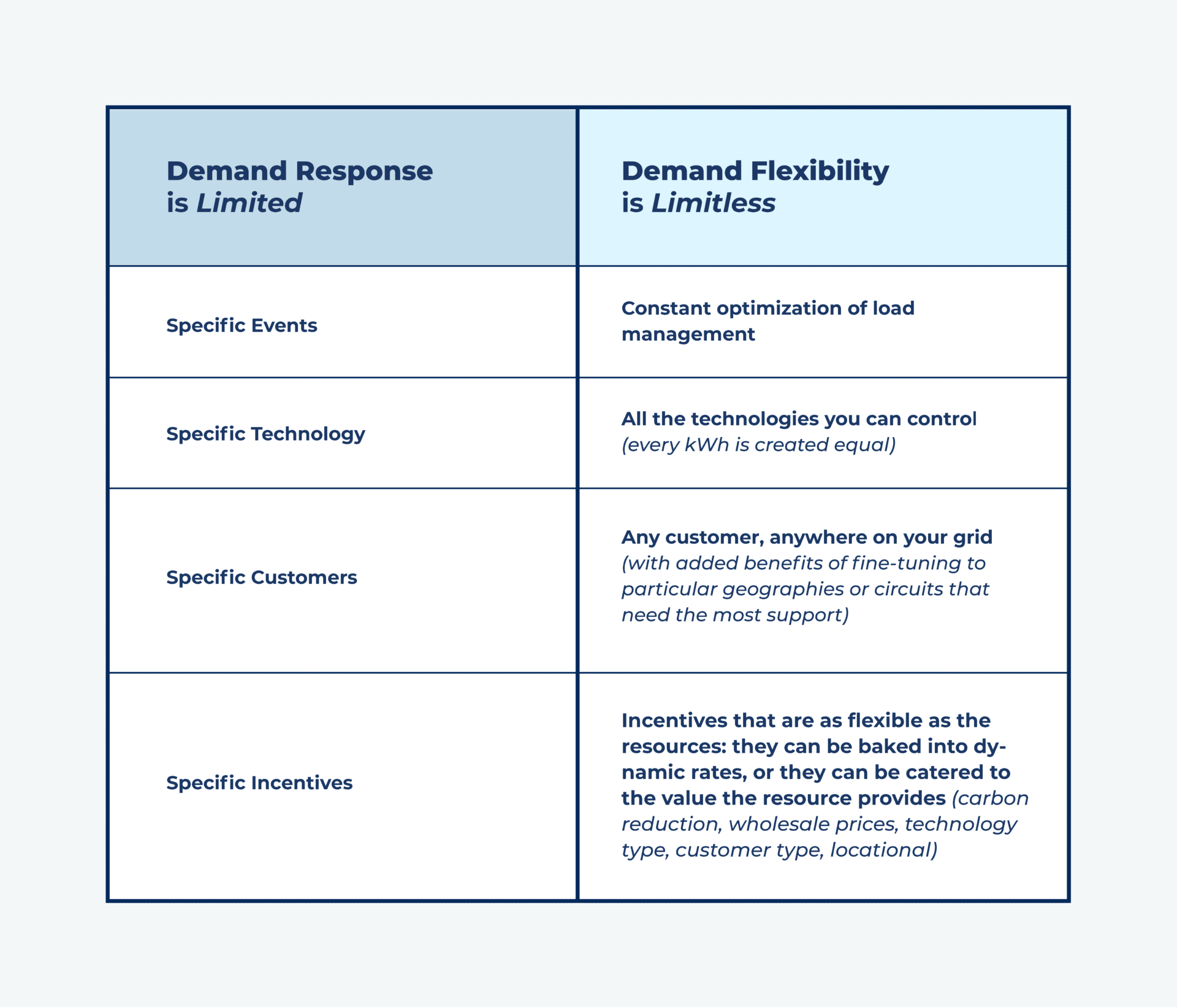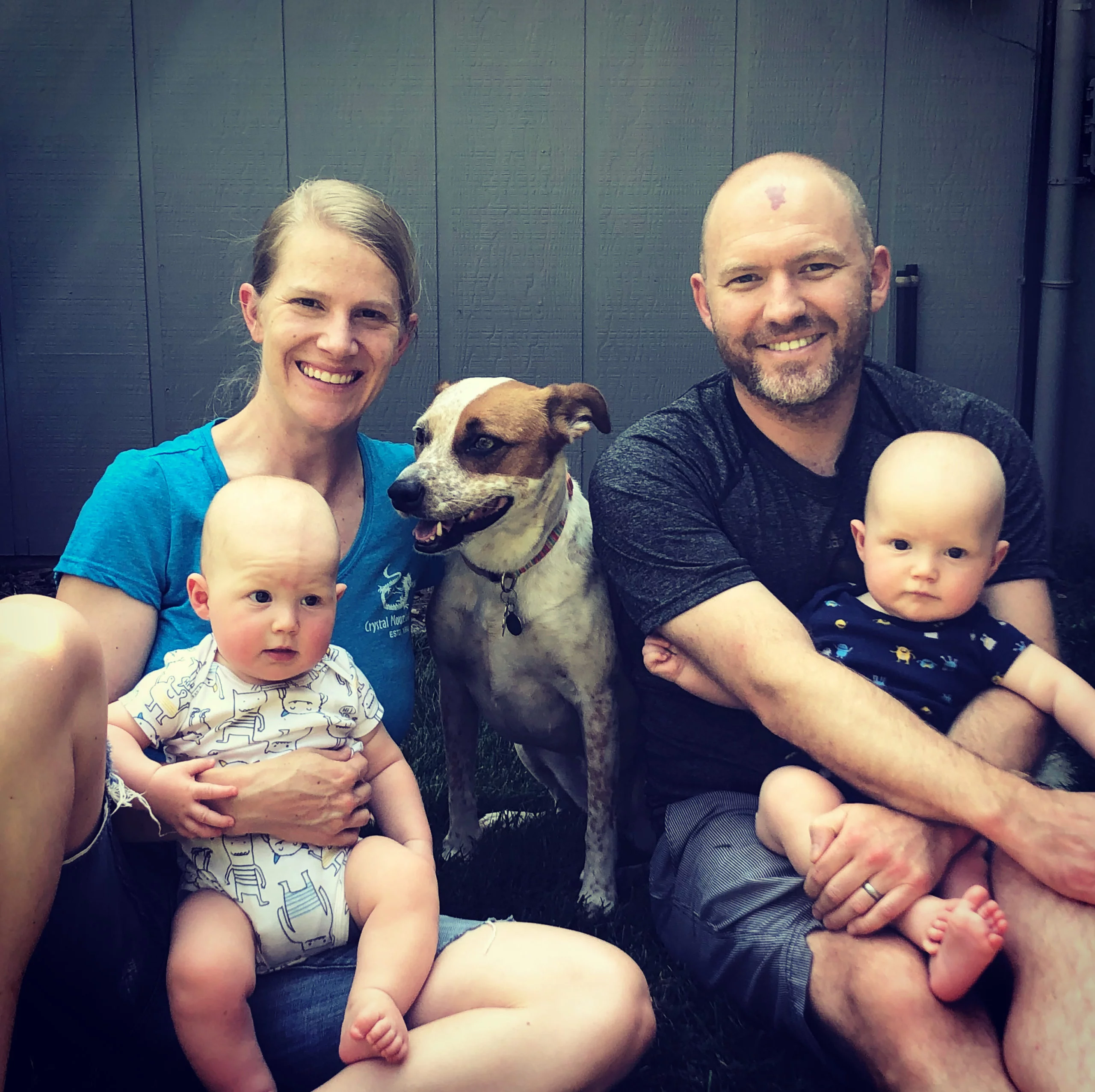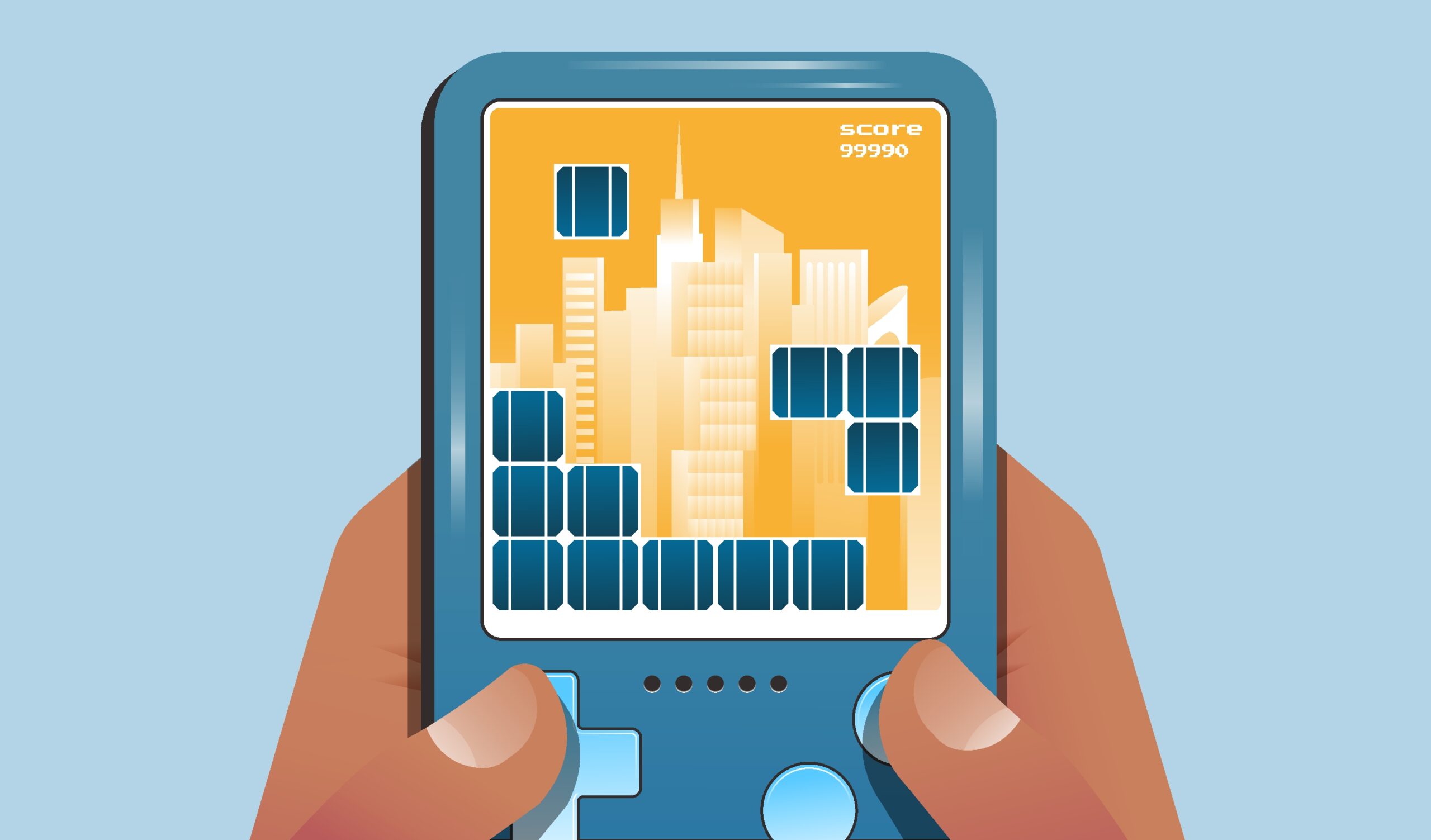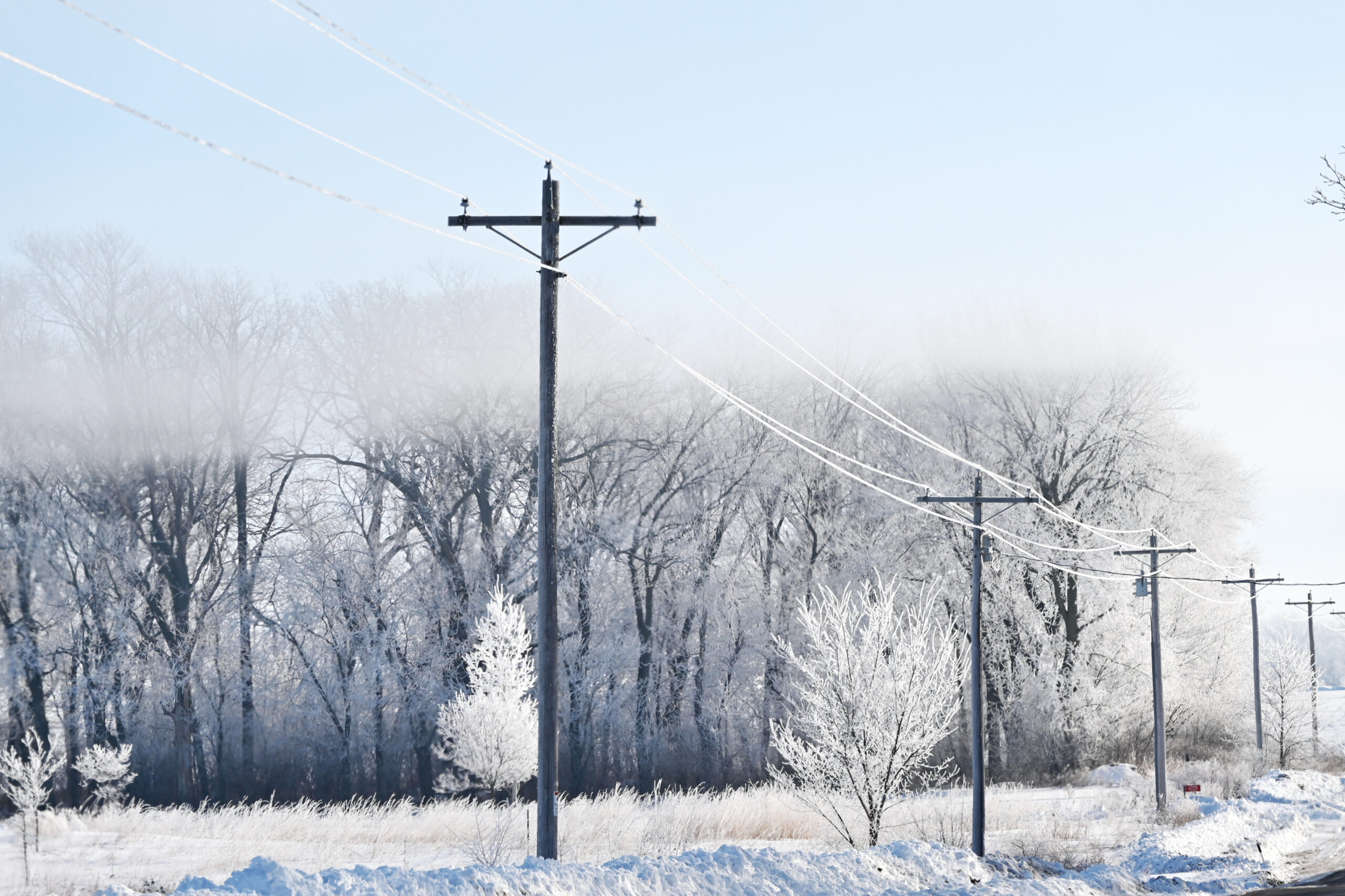To understand the distinction between demand response and demand flexibility, it helps to reflect on the origins of demand-side management. As utilities started reaching the limits of their infrastructure, and customers started consuming more electricity and paying higher utility bills, the energy industry turned to energy conservation.
The Origins of Energy Conservation
Energy conservation started as a technological solution: to improve energy devices to use less energy to achieve the same outcomes. This is what the industry calls energy efficiency. Energy markets evolved, EE technology became ubiquitous, and big data emerged, which caused utilities to explore energy conservation from a new perspective: engineering different outcomes. Different outcomes are achieved by different energy consumption patterns. It doesn’t always mean less energy consumed in totality, but it’s about when it is used, with the goal of matching energy demand to energy supply. This is what the industry calls demand management or demand response.
With so much overlap in high-level goals (conserve energy!) energy efficiency and demand management organically developed in the same utility department: the customer programs group. Typically, utilities are organized around five major departments:
- utility operations
- energy procurement
- rates
- external relations
- customer programs.
These departments could be put in this order on a scale of criticality. Customer programs are nice to have because they are designed to help customers, not just the grid. Customer programs are often put in place based on policy constructs, with legislators enacting laws that require customer programs to protect consumer rights, customer bills, and the planet. Regulators then hold utilities accountable for complying with these customer program rules.
Are you up in arms? “You’re wrong! That’s not what customer programs do! You’re oversimplifying and missing the point.” Let’s look at the evolution of demand-side management and the growing criticality of these resources.
A Brief History of Customer Programs
At their origin, all customer programs start with, you guessed it, customers! For energy conservation programs, it’s especially true that the biggest customers offered the most opportunity to conserve: industrial and agricultural customers are the lowest-hanging fruit with the highest energy conservation potential. This relatively small volume of customers have significant but predictable energy needs and sometimes get preferential treatment: lower energy rates, extra energy efficiency programs, and larger rebates.
Utilities often provide large customers with account managers that they can directly connect with about bills and energy conservation opportunities. These account managers built deep relationships with their customers and, as energy efficiency equipment became mainstream and technology became easier to control, new opportunities arose to manage electricity demand to align with supply.
Note: This can all be true for natural gas demand and supply as well, but the flow and pressure of gaseous fuel from storage to consumption is simpler to manage than the extremely sensitive constraints of voltage and frequency for electricity supply.
Demand Response To The Rescue
Enter demand response! Working across departments, account managers get calls from the utility operations team like, “Will you ask a few large industrial customers to turn off their equipment for a couple of hours tomorrow? We’re expecting some strain on the grid.” Account managers are then contracted with some of their largest customers to make calls and ask for energy conservation. Behavioral demand response worked, but you can see the inefficiencies.
Wanted: Expanded Energy Conservation Programs
Reaching other customer classes required different tactics. To communicate with commercial and residential customers about reducing their consumption at certain times, utilities invested in software solutions (often provided by third parties). Automated messages, like California’s Flex Alerts, asked customers to change their behavior and take direct action to reduce energy consumption. There was still a gap between the utility request and the customer’s usage that made it difficult to rely on this as a grid resource.
And Now: The Internet of Things & Direct Load Control
Enter technology! The internet of things enables utilities to tap into distributed energy resources (DERs) that are connected to WiFi or radio signals and directly operate them through tools like distributed energy resource management systems (DERMS). This was a game changer for demand response, allowing for direct load control. With access to data and devices (with customer consent), utilities can predict how much energy conservation will be achieved when they change settings on distributed energy resources, like thermostats, energy storage systems, water heaters, and electric vehicles. What used to be a rudimentary on/off request that relied on customer behaviors, was now a dynamic optimization exercise based on online resources and probability of performance.
This is how customer programs evolved from a customer relationship manager to a technical grid resource. Are you feeling some relief and affirmation now?
New Demand Management Challenges
But challenges still exist. The operational nature of this valuable grid resource can be siloed from the operations teams based on historic divisions of roles and responsibilities. This is something utilities are really grappling with today. How do we transform customer-sited resources to have a utility-scale impact? And part of that answer is dispatchability.
Calling demand response events where program managers throttle down air conditioners or turn off electric vehicle chargers is not where this evolution ends. Demand response is and will remain important for the hottest heat waves or when a power plant experiences an outage. But the long-term, more dispatchable (and potentially more critical as a grid resource) program is demand flexibility.

Why Demand Flexibility?
Demand flexibility acknowledges that DERs offer value at all times. The grid is a dynamic system that is constantly balancing and rebalancing, so flexibly managing the electricity demand from DERs through a software platform can be a much less expensive solution than turning on and off power plants. When the grid has excess electricity supply, utilities want to charge energy storage systems and electric vehicles and pre-heat or pre-cool air and water (in the case of pre-heat) in advance of periods when the grid has a shortage of electricity supply.
Utilities thought of energy efficiency and demand response as customer programs. Demand flexibility is the tool that invites utility operations to take a more active role in managing DERs.
The Customer Benefits of Demand Flexibility
What’s in it for customers? While behavioral demand response can have the benefits of lowering customer bills (but only if energy is conserved, not just shifted to a different time), dynamic rates and demand flexibility (like the work that California has done) with direct load control can set up customer devices to intelligently adjust usage based on market signals, guaranteeing bill savings and overall utility cost reductions.
Conclusion: From Demand Response to Demand Flexibility
How do we get started? Some utilities are paving the way as they see the value of adding more demand flexibility programs, while others may need policy and funding to get this work started. This is a technology shift, but also an operations and utility management shift. There will be growing pains, but we’ll get to a better outcome! Demand flexibility is the future of demand management. Thanks for the work you’ve done to get us here, demand response; we couldn’t have done it without you!







